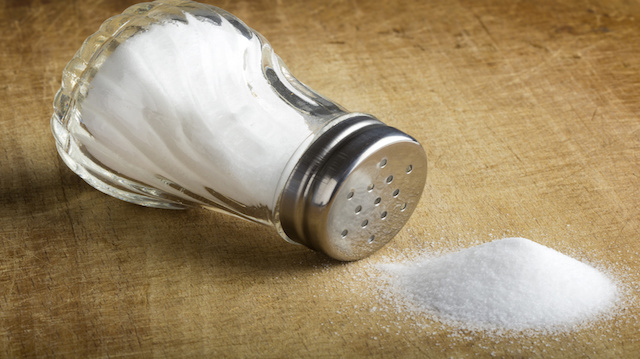
Substituting table salt for sea salt offers a wide variety of health benefits. Sea salt has been found to strengthen your immune system, decrease asthma symptoms, increase heart health and decrease your risk for developing diabetes, among other benefits. But a recent study has found that sea salt, specifically sea salt from China, may contain microplastics that could be harmful to you and your family’s health.
Research conducted by East China Normal University and Donghua University in China, recently published in Environmental Science & Technology (2015), found high amounts of microplastics, tiny plastic particles, in sea salt. Researchers did note that although the microplastics were found in sea salt originating from China, this is a global problem, and one that could be harmful to human health.
The study, published in October, collected 15 brands of sea salt, lake salt and rock salt available for purchase in Chinese supermarkets. Researchers were focused on measuring microplastics, which are broken down from the plastic waste of daily consumer products like plastic bottles and bags. The National Oceanic and Atmospheric Administration (NOAA) states that the microplastics from human waste can range between one nanometer and five millimeters in size, according to their “Microplastic Marine Debris Report.”
The study found high amounts of microplastics in average table salt, however, the highest amounts of microplastics were found in sea salt. The research revealed that the sea salt tested contained 1,200 microplastic particles per pound. “Microplastics are a particular threat to organisms due to their small size and their capacity to absorb persistent organic pollutants,” lead researcher of the study, Shi Huahong, of the university’s Institute of Estuarine commented in news reports.
Should we begin tossing our salt? Well, cutting back on salt may not be a horrible idea, however, microplastic particles in salt is not the big issue here. China is the world’s number one salt producer, but whether the salt is Chinese, American, or from any other country, microplastics are everywhere. “Plastics have become such a ubiquitous contaminant, I doubt it matters whether you look for plastic in sea salt on Chinese or American supermarket shelves,” Sherri Mason, an environmental science researcher at the University of New York, Fredonia, warned in a Scientific American report.
 Microplastics may also have some harmful effects on humans. A study published in Current Biology (2013) examined the health effects of microplastics and pollutants on worms. The study concluded, “As global microplastic contamination accelerates, our findings indicate that large concentrations of microplastic and additives can harm ecophysiological functions performed by organisms.” Microplastics are ingested through the food we eat, and they may transfer other pollutants and chemicals.
Microplastics may also have some harmful effects on humans. A study published in Current Biology (2013) examined the health effects of microplastics and pollutants on worms. The study concluded, “As global microplastic contamination accelerates, our findings indicate that large concentrations of microplastic and additives can harm ecophysiological functions performed by organisms.” Microplastics are ingested through the food we eat, and they may transfer other pollutants and chemicals.
What can you do to prevent microplastics in your food? Unfortunately, this is a global problem that will continue if the world’s plastic use does not decrease significantly. You can do your part and stop using plastic in your daily life.
Here are a few tips to reduce your use of plastic:
- Stop buying products wrapped in plastic.
- Cut down on plastic bags and use cloth ones for shopping.
- Use a reusable water bottle.
- Wear nonsynthetic clothing.
- Compost your food and garden waste.
- Use a homemade container for leftovers in lieu of the plastic ones at a restaurant.
- Ditch the straws.
You can also do a bit of research and find ways to take part in community-wide projects aimed at reducing the use of plastic. There are plenty of plastic alternatives that may even save you a buck or two as well!
How much plastic do you use in a day?
—Stephen Seifert
When shopping for sea salt, look for an unrefined sea salt. Unrefined sea salt retains all the natural minerals your body needs. The only sea salt we use in our kitchen is from Ava Jane’s Kitchen. Learn more and receive a special offer today!
Sources:
http://pubs.acs.org/doi/abs/10.1021/acs.est.5b03163?source=cen&
http://marinedebris.noaa.gov/sites/default/files/MicroplasticsOnePager_0.pdf
http://www.cell.com/current-biology/abstract/S0960-9822(13)01253-0?_returnURL=http%3A%2F%2Flinkinghub.elsevier.com%2Fretrieve%2Fpii%2FS0960982213012530%3Fshowall%3Dtrue

